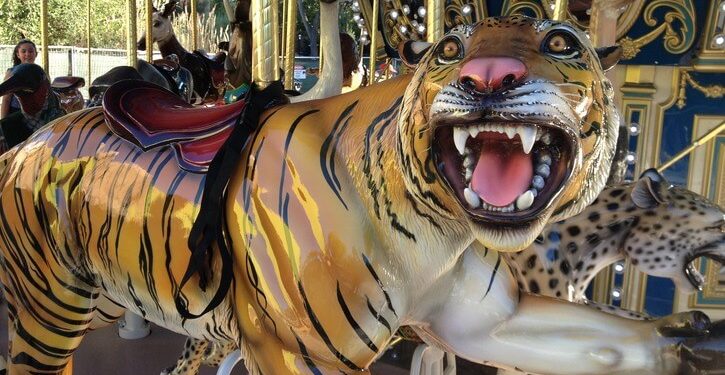Carousel animals are an integral part of the carousel experience, providing a whimsical and enchanting ride for riders of all ages. Each carousel animal is a work of art, carefully hand-carved and painted to bring it to life.
What are carousel animals, and what is their purpose on a carousel ride?
Carousel animals are the ornately carved and painted figures that decorate the platform of a carousel ride. These figures often take the form of horses, but can also include other animals such as lions, tigers, zebras, and even mythical creatures such as dragons and unicorns.
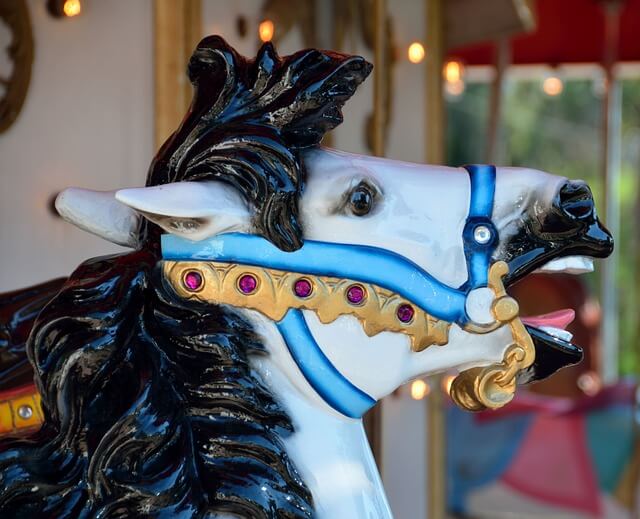
The purpose of carousel animals is to provide riders with a visually appealing and exciting experience while riding the carousel. The figures are mounted on poles or other mechanisms that allow them to move up and down, giving riders the feeling of riding a real horse or other animal.
Carousel animals also play an important role in the history and culture of carousels. They are often intricately designed and beautifully crafted, serving as works of art in addition to functional components of the ride. Carousel animals have been a part of carousel design since the earliest days of the ride, and have remained an important element of carousel culture and tradition to this day.
How have carousel animals evolved over time?
Carousel animals have evolved significantly over time, both in terms of their design and the materials used to make them.
In the early days of carousels, carousel animals were typically carved from wood and painted with a few basic colors. The designs were simple, and the animals were often made to look as realistic as possible. Horses were the most common animal depicted, but other animals such as lions, tigers, and zebras were also used.
As carousels grew in popularity and became more elaborate, carousel animal designs became more intricate and imaginative. In the late 1800s and early 1900s, carousel animals reached their height of popularity and creativity. Animals were carved with intricate details and lifelike poses, from prancing horses to majestic lions and tigers. Many carousels also featured mythical creatures such as unicorns, griffins, and sea monsters.
With the advent of new materials and technologies, carousel animal designs continued to evolve. In the mid-20th century, fiberglass became a popular material for carousel animals due to its durability and flexibility in design. Carousel animals made from fiberglass could be made in any shape or size and could be painted with intricate and detailed designs.
Today, many carousel animals are still made from fiberglass, but some carvers also continue to use traditional materials such as wood and metal. Some modern carousel animals also feature animatronics, adding an extra layer of excitement and realism to the ride experience.
Overall, carousel animals have evolved from simple and realistic designs to intricate and imaginative creations made from a variety of materials. They continue to be an important part of carousel culture and tradition, providing riders with a visually stunning and enchanting ride experience.
Who were some famous carousel animal carvers?
There have been many talented carousel animal carvers throughout history. Here are just a few notable examples:
Gustav Dentzel – Gustav Dentzel was one of the most influential carousel animal carvers of the late 19th and early 20th centuries.
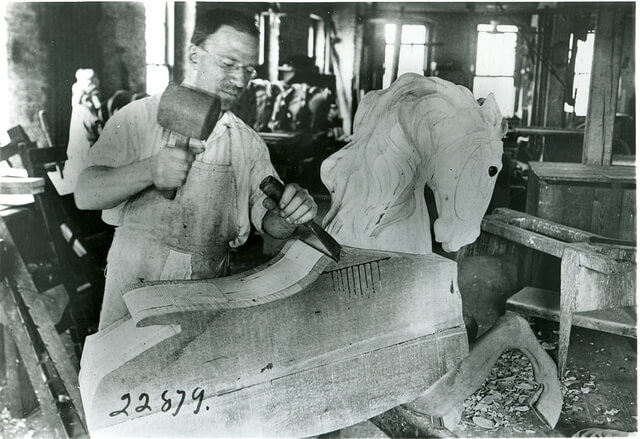
He worked in a family business in Pennsylvania that produced some of the most beautiful and intricate carousel animals of the time.
Charles Looff – Charles Looff was a Danish-American carousel carver who is considered one of the most important figures in the history of carousels.
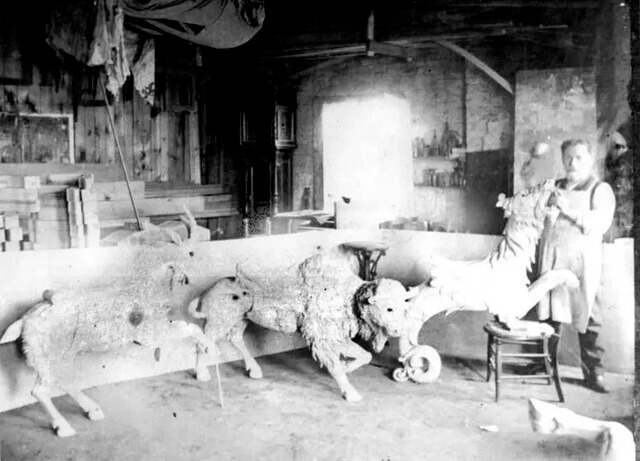
He is credited with helping to popularize carousels in America and was known for his elaborate and detailed designs.
Marcus Illions – Marcus Illions was a Russian-American carousel carver who is considered one of the most talented and innovative carvers of his time.

He was known for his lifelike and expressive animal designs, and his horses were especially famous for their beautiful and intricate carving.
Daniel Muller – Daniel Muller was a Swiss-American carousel carver who was famous for his beautiful and intricate carvings of horses and other animals.
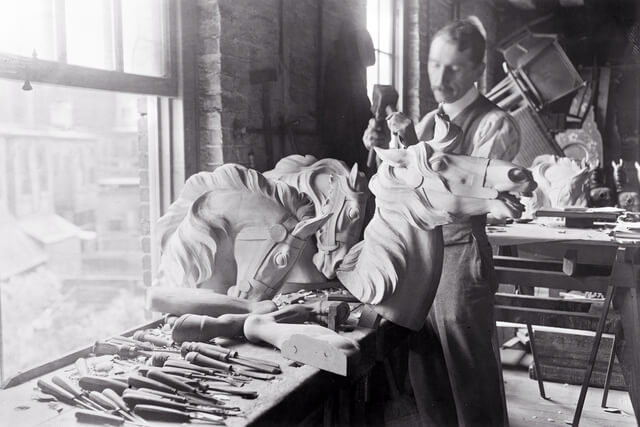
He worked for several carousel companies throughout his career, and his work is still highly sought after by collectors and enthusiasts today.
These are just a few examples of the many talented carousel animal carvers throughout history. Each carver has their own unique style and contribution to the art form, making carousel animals a truly unique and beautiful aspect of amusement park culture.
What made their work unique?
The work of famous carousel animal carvers was unique due to several factors. Here are a few key elements that made their work stand out:
Attention to detail – Carousel animal carvers were known for their meticulous attention to detail. They would spend countless hours carving, sanding, and painting each animal to ensure that every detail was perfect. This attention to detail gave their work a level of realism and beauty that set it apart from other amusement park attractions.
Innovative designs – Many famous carousel animal carvers were known for their innovative designs. They would often take traditional animal forms and add their own unique twist, creating animals with expressive faces, lifelike poses, and intricate detailing that made them truly stand out.
Artistic talent – Carousel animal carving is a true art form, and the best carvers were not just skilled craftsmen, but also talented artists. They would use their artistic skills to create animals that were not just functional components of a ride, but also beautiful works of art.
Tradition and history – Carousel animal carving is a tradition that dates back centuries, and the best carvers were often deeply connected to this history. They would draw inspiration from the classic carousel designs of the past, while also putting their own unique spin on the craft to create something new and exciting.
Overall, the work of famous carousel animal carvers was unique due to their attention to detail, innovative designs, artistic talent, and connection to tradition and history. These elements combined to create animals that were not just thrilling attractions, but also beautiful works of art that continue to capture the imagination of people around the world.
What materials were commonly used to make carousel animals
Carousel animals have been made from a variety of materials throughout history. Here are some of the most commonly used materials:
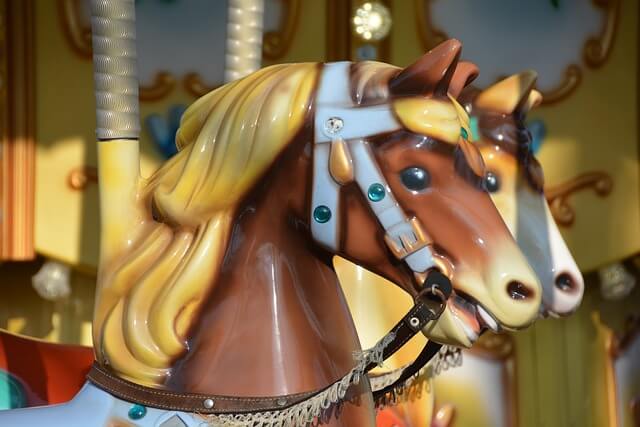
Wood – Wood was one of the earliest and most popular materials used to make carousel animals. Carvers would use a variety of woods, including basswood, pine, and oak, to carve animals with intricate detailing and lifelike poses.
Metal – Metal was also used to make carousel animals, particularly in the early days of carousels. Carvers would use materials such as cast iron or sheet metal to create animals with smooth surfaces and intricate details.
Papier-mache – Papier-mache is a lightweight and durable material made from paper pulp that has been mixed with glue or other binding agents. It was commonly used to make carousel animals in the mid-1800s and early 1900s.
Fiberglass – Fiberglass is a modern material that has become increasingly popular for carousel animals due to its durability, flexibility, and ease of use. Carvers can create animals of any size or shape using fiberglass, and the material can be painted with intricate and detailed designs.
Resin – Resin is another modern material that is used to make carousel animals. It is a synthetic material that can be molded and painted to create animals with lifelike textures and colors.
Overall, carousel animals have been made from a wide variety of materials throughout history, with each material offering its own unique advantages and disadvantages. Whether carved from wood, cast in metal, or molded from modern materials like fiberglass or resin, carousel animals continue to captivate riders with their beauty and charm.
To conclude
In conclusion, carousel animals are a beloved aspect of amusement park culture that have captivated riders for centuries. The intricate hand-carved designs and lifelike poses of these animals are a testament to the skill and creativity of the carvers who brought them to life.
From the traditional horses of the early carousels to the modern animatronic animals of today, carousel animals have evolved over time to become some of the most beautiful and captivating amusement park attractions in the world.
As we continue to enjoy the thrill and beauty of these carousel animals, we can appreciate the artistry and tradition behind their creation, and the lasting legacy they have left on the world of amusement park entertainment.

